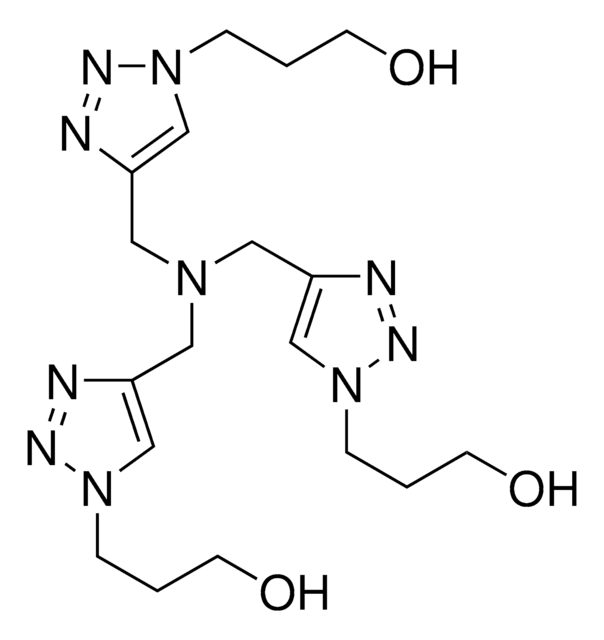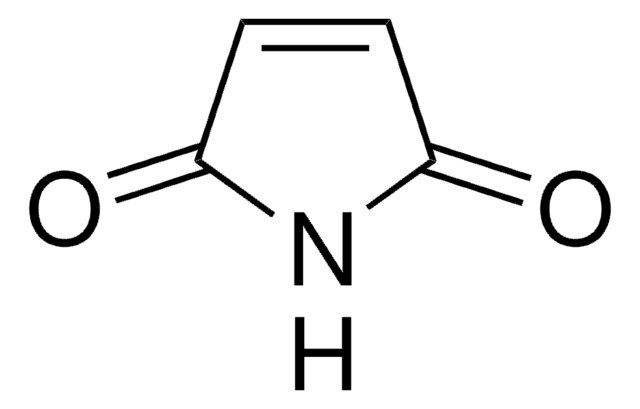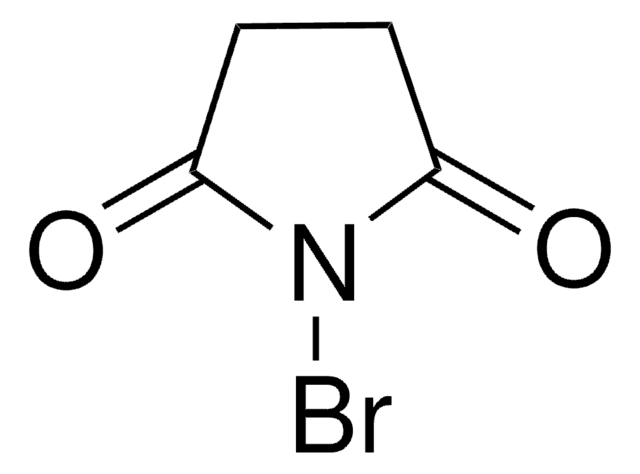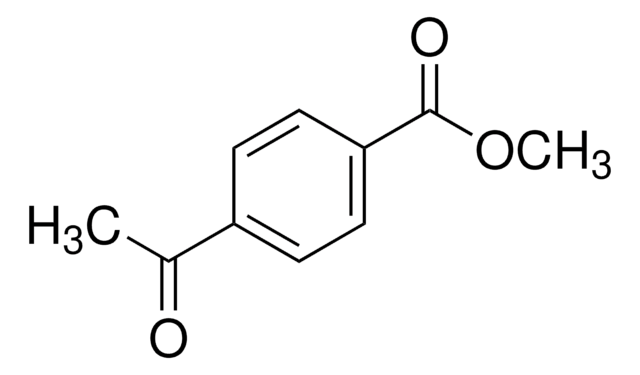推荐产品
质量水平
方案
≥95%
表单
solid
颜色
white to beige
储存温度
2-8°C
SMILES字符串
[N-]=[N+]=NCCCNC(=O)CCCCC1SCC2NC(=O)NC12
InChI
InChI=1S/C13H22N6O2S/c14-19-16-7-3-6-15-11(20)5-2-1-4-10-12-9(8-22-10)17-13(21)18-12/h9-10,12H,1-8H2,(H,15,20)(H2,17,18,21)/t9-,10-,12-/m0/s1
应用
This reagent enables the specific labeling of various alkynylated molecules, such as DNA, oligonucleotides, and proteins, with biotin. The binding of biotin to avidin or streptavidin can be employed in downstream affinity applications, such as the isolation of biotinylated molecules or their interaction with streptavidin conjugates. Biotin azide undergoes a copper-catalyzed click reaction with terminal alkynes, enabling the incorporation of biotin and biotin derivatives into biomolecules that contain alkyne groups through azide-alkyne cycloaddition.
特点和优势
Biotin-azide (N-(3-Azidopropyl)biotinamide) is an azido derived biotin probe. Biotin-azide can be used to prepare various biotinylated conjugates via Click Chemistry.The conjugation of biotin and its derivatives to various biomolecules can be achieved through the widely recognized click chemistry methodology, followed by their detection using streptavidin, avidin, or NeutrAvidin biotin-binding proteins. Biotin azide serves as a valuable reagent for the synthesis of diverse biotinylated conjugates via Click Chemistry
储存分类代码
11 - Combustible Solids
WGK
WGK 3
闪点(°F)
Not applicable
闪点(°C)
Not applicable
历史批次信息供参考:
分析证书(COA)
Lot/Batch Number
D C Montgomery et al.
Methods in enzymology, 574, 105-123 (2016-07-18)
Changes in reversible protein acetylation mediate many key aspects of genomic regulation and enzyme function. The catalysts for this posttranslational modification, lysine acetyltransferases (KATs), have been difficult targets for characterization due to their complex architecture and challenging reconstitution. To address
Development of a Multifunctional Benzophenone Linker for Peptide Stapling and Photoaffinity Labelling
Wu Y, et al.
Chembiochem, 17, 689-692 (2016)
Christina M Woo et al.
Analytical and bioanalytical chemistry, 409(2), 579-588 (2016-10-04)
Protein glycosylation is a post-translational modification (PTM) responsible for many aspects of proteomic diversity and biological regulation. Assignment of intact glycan structures to specific protein attachment sites is a critical step towards elucidating the function encoded in the glycome. Previously
Kristina Hofmann et al.
Journal of lipid research, 55(3), 583-591 (2013-12-18)
Cholesterol is an important lipid of mammalian cells and plays a fundamental role in many biological processes. Its concentration in the various cellular membranes differs and is tightly regulated. Here, we present a novel alkyne cholesterol analog suitable for tracing
Qingfei Zheng et al.
The Journal of organic chemistry, 85(3), 1691-1697 (2019-12-26)
Methylglyoxal (MGO) is a reactive dicarbonyl metabolite that modifies histones in vivo and induces changes in chromatin structure and function. Here we report the synthesis and application of a chemical probe for investigating MGO-glycation. A two-step synthesis of a Cu-click
我们的科学家团队拥有各种研究领域经验,包括生命科学、材料科学、化学合成、色谱、分析及许多其他领域.
联系技术服务部门

![N-[2-[2-[2-(2-叠氮乙氧基)乙氧基]乙氧基]乙基]生物素胺](/deepweb/assets/sigmaaldrich/product/structures/120/306/c9779b03-3754-4ad6-8eef-b07209e113ce/640/c9779b03-3754-4ad6-8eef-b07209e113ce.png)



![三[(1-苄基-1H-1,2,3-三唑-4-基)甲基]胺 97%](/deepweb/assets/sigmaaldrich/product/structures/179/695/86a721c8-2a4c-4e4f-bc36-6276ce7a941f/640/86a721c8-2a4c-4e4f-bc36-6276ce7a941f.png)


